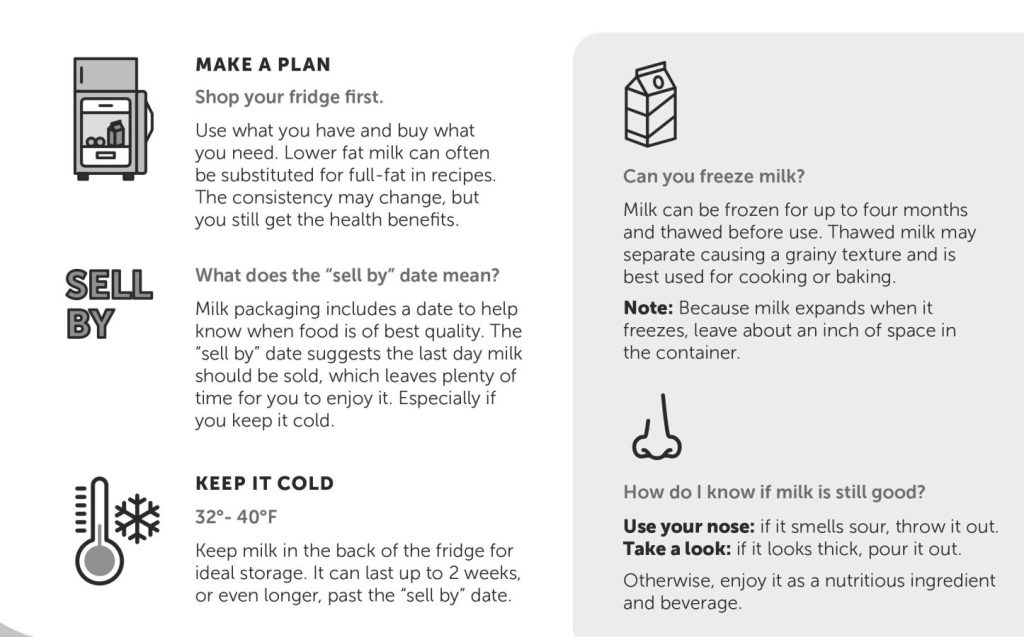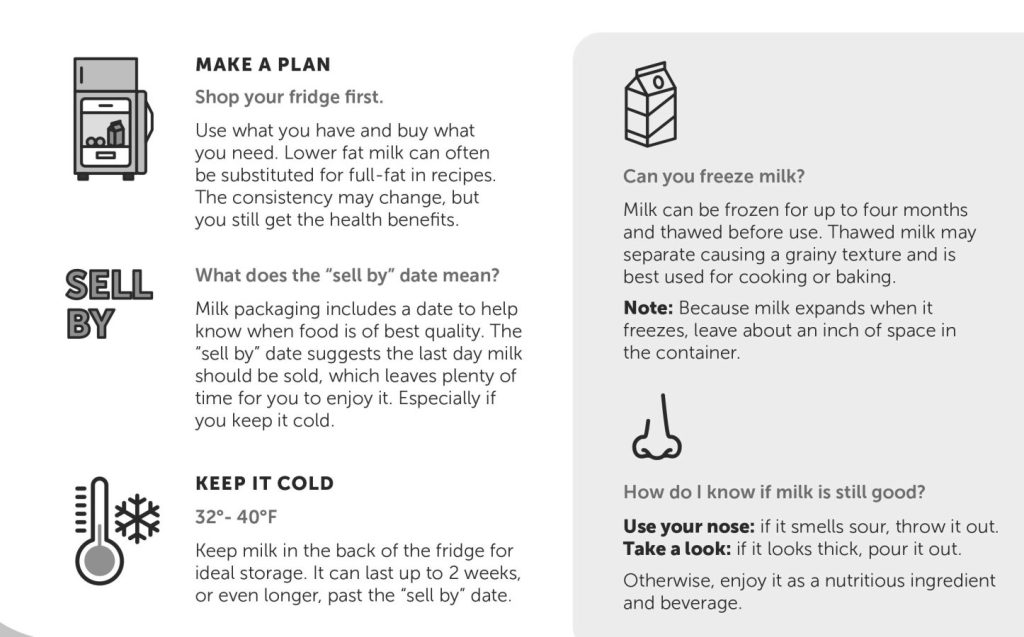Reducing food waste in your own kitchen

We in the dairy industry often talk about food waste in the context of how dairy cows are able to upcycle foods that are byproducts of things produced for human consumption. In Maine, some common examples are spent grains from breweries, whey from yogurt and canola meal from canola oil production. Other states might use cotton seed hulls, almond hulls or citrus pulp. Cows do a great job of keeping some food waste from ending up in landfills, but we can’t put all the responsibility on the livestock.
As food rots, it produces methane gas. Did you know that if food waste were a country, it would be the third largest carbon emitter behind China and the United States? It’s estimated that 16 percent of the methane emissions in the U.S. comes from food waste. Between 30 and 40 percent of food in the U.S. goes uneaten. That incredibly equals about 20 pounds per person per month. Those figures are not just+ focused on households, but also take into account farming, packing, processing and distribution, and retail and food service.
At the same time that all this food is going to waste, 1 in 7 Americans is food insecure. Just 15 percent of the food we waste in our country could feed 25 million Americans each year.
I know I have thrown a lot of facts and figures your way, but I think it’s all fascinating, and I think we all need to know how just a little change can make a big impact.
Take note if the date on perishable food is an actual expiration date or a “sell by” (which tells the retailer how long they can display the food but does not mean the food has gone bad) or a “best by” (which is a suggestion but also does not mean the food cannot be consumed after that date). According to the US Department of Agriculture’s Food Safety and Inspection Service:
- Eggs can keep for three to five weeks beyond the “sell by” date.
- Fresh chicken, turkey and ground meats should be cooked or frozen within two days.
- Fresh beef, pork and lamb should be cooked or frozen within three to five days.
Don’t be so picky. I’m sure you’ve heard of “ugly” fruits and vegetables. If we normalize choosing and consuming the imperfect produce, a great deal of fruits and vegetables could be saved from the waste bin. A couple of stores I shop in will give a big discount on browning bananas or even give them away for free. I always snatch up these. If I won’t be able to immediately bake up banana bread or muffins, I will peel and chop up the bananas to put in the freezer. Frozen bananas are something I always like having on hand for smoothies (strawberry banana, mango banana or chocolate peanut butter banana being my favorite combos).
Meal planning. This is something I’ve been trying to do better about, to combat food prices not just food waste. I want to make sure what I buy is going to get eaten or can be frozen for future use. Along with this, we need to get over our aversion to leftovers. Get creative to make a new dish with your leftovers. I like to roast a chicken with vegetables on the weekend. I then make a soup with the leftovers or a chicken stir fry or enchiladas. One chicken will turn into multiple meals.
In the dairy industry, we want as little dairy as possible to end up in landfills. When it comes to milk, the secret is to keep it cold, 32-40 degrees, and keep it in the back of the fridge for ideal storage. This can make milk last for up to 2 weeks beyond the “sell by” date. Sniff it. If it smells sour, pour it out. If it looks thick, pour it out. Otherwise, enjoy it as a nutritious ingredient and beverage. Use milk instead of water to make oatmeal, soups, and pancakes for added protein. Blend it in a smoothie with fruit, yogurt, almond butter, and a handful of spinach or oats. Create a cold brew latte by mixing 1 cup of cold coffee with½ cup of milk, sweeten to taste and serve over ice.
The following recipe is a good way to cook with milk and use up several other foods before they become trash.
Cheese and Vegetable Strata
Strata is Latin for layers. This baked casserole has layers of bread, vegetables, and cheese. From artichokes to zucchini, strata is a no-waste recipe. Try different hearty breads, cheeses, raw, cooked, and frozen vegetables to use up what you have on hand.
Ingredients
1 ¾ cup milk
4 eggs
1 tablespoon Dijon mustard
1 teaspoon dried minced onion
5 dashes hot sauce (like Tabasco)
4-5 cups firm or stale 1-inch bread cubes
3 cups raw spinach or 10-ounces frozen spinach, thawed, drained
½ chopped cooked peppers
½ cup cherry or diced tomatoes
1 cup grated cheese
Cooking spray
Directions:
- Heat oven to 375° F. Lightly spray 10-inch oven-proof skillet or 11″ x 8″ baking dish with cooking spray.
- In a large bowl, stir milk, eggs, Dijon mustard, dried onion, and hot sauce with a fork or whisk until eggs are blended and mixture is the same color.
- Add bread cubes, vegetables, and cheese to milk mixture, stir together until all is well mixed. Pour into baking dish. Bake 35-40 minutes, until bread is toasted and the strata looks set. Remove from oven.
- Store leftovers covered in the refrigerator for up to 4 days. Reheat in 350° F oven for 15 minutes or in the microwave 2-3 minutes, until heated through.




